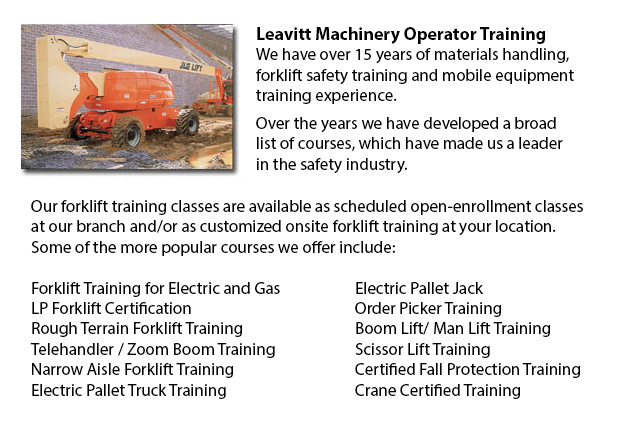
Oakville Boom Lift Operator Training - A cherry picker is a kind of aerial work platform. Cherry pickers have a platform or bucket at the hydraulic lifting system's end. The device is also called a boom lift, man lift, basket crane or hydraladder.
The bucket or platform is usually mounted on the back of a big motor vehicle like for example a truck, which is occasionally called a bucket truck. A stand-alone trailer, self-moving platform or flat back pickup van can also be made use of. The worker stands and starts working inside the bucket. The individual in the bucket usually has an upper set of controls allowing control of the position of the bucket. The reach of the bucket could be extended on several models by telescoping to adjust the lifting arm. Safety controls which are automatic prevent tipping. Articulated boom lifts are suggested for working within tight spaces or when it is necessary to clear obstacles.
Cherry pickers, as the name suggests, were initially constructed for picking fruit in trees at high levels. These devices are normally used in other industries like for instance construction, mining and exterior painting. Sometimes they are utilized for cleaning windows on high structures. The devices are utilized to service electrical equipment, telephone and cable television on utility poles. Sometimes, firefighters make use of cherry pickers, know as snorkels, when ladders are inadequate. During Christmas time, civic workers could be seen inside cherry pickers hanging banners and lights.
Boom Lift Operator Safety Training
Suggested training standards for safety awareness are set by local regulations. Curriculum includes safe operation methods through a combination of classroom and hands-on components.
The following topics are covered: general equipment safety matter; current regulations and applicable concerns; features of boom lifts; fall protection, scissor-lifts and different stationary work platforms.
The responsibilities of the lift operator are covered, such as the following topics: workplace inspections; function test procedures; avoiding and knowing hazards; equipment manufacturer's instructions and pre-operation check procedures.
-
Oakville Overhead Crane Safety Training
Oakville Overhead Crane Safety Training - Overhead crane safety training equips operators with skills and knowledge regarding crane safety measures, accident avoidance, materials handling, and machinery and stock protection. Trainees will learn the t... More -
Oakville Crane Training Schools
Oakville Crane Training Schools - Our various Mobile Crane Operation programs are designed for skilled operators who needs re-certification or certification, and for inexperienced individuals who are seeking their very first job as an operator of a c... More -
Oakville Overhead Crane Certification
Oakville Overhead Crane Certification - The overhead crane certification course is a course that is designed to help trainees, even though they have language or literacy limits. The course consists of a classroom theory part and a practical hands-on... More -
Oakville Forklift Training Programs
Oakville Forklift Training Programs - If you are searching for work as an operator of a forklift, our regulatory-compliant forklift training programs provide exceptional instruction in various types and styles of forklifts, classes on pre-shift inspe... More -
Oakville Fall Protection Ticket
Oakville Fall Protection Ticket - The number one cause of death in the construction business come from fall-related accidents. There is more possibility for fall accidents depending on the types of work being performed within your workplace. Thus, be... More -
Oakville Zoom Boom Training
Oakville Zoom Boom Training - Zoom Boom Training focuses on correctly training potential operators on variable reach forklifts. The training objectives consist of gaining the understanding of the machine's physics and to define the job of the operato... More -
Oakville Aerial Lift Ticket
Oakville Aerial Lift Ticket - A boom truck is often recognized by the cable and telephone company vans that have the elongated arm folded over their roofs. Commonly, a bucket-like apparatus sits at the extension of extendable arms. Often referred to... More -
Oakville Scissor Lift Training
Oakville Scissor Lift Training - Scissor lifts need to be operated competently to be able to protect the safety of the machinery and the safety of people in the workplace. Operators who are skilled are trained to drive the specific model of scissor l... More

Forklift Certification Oakville
TOLL FREE: 1-888-254-6157
Oakville, Ontario
forkliftcertificationoakville.com
Email Us
About Us


